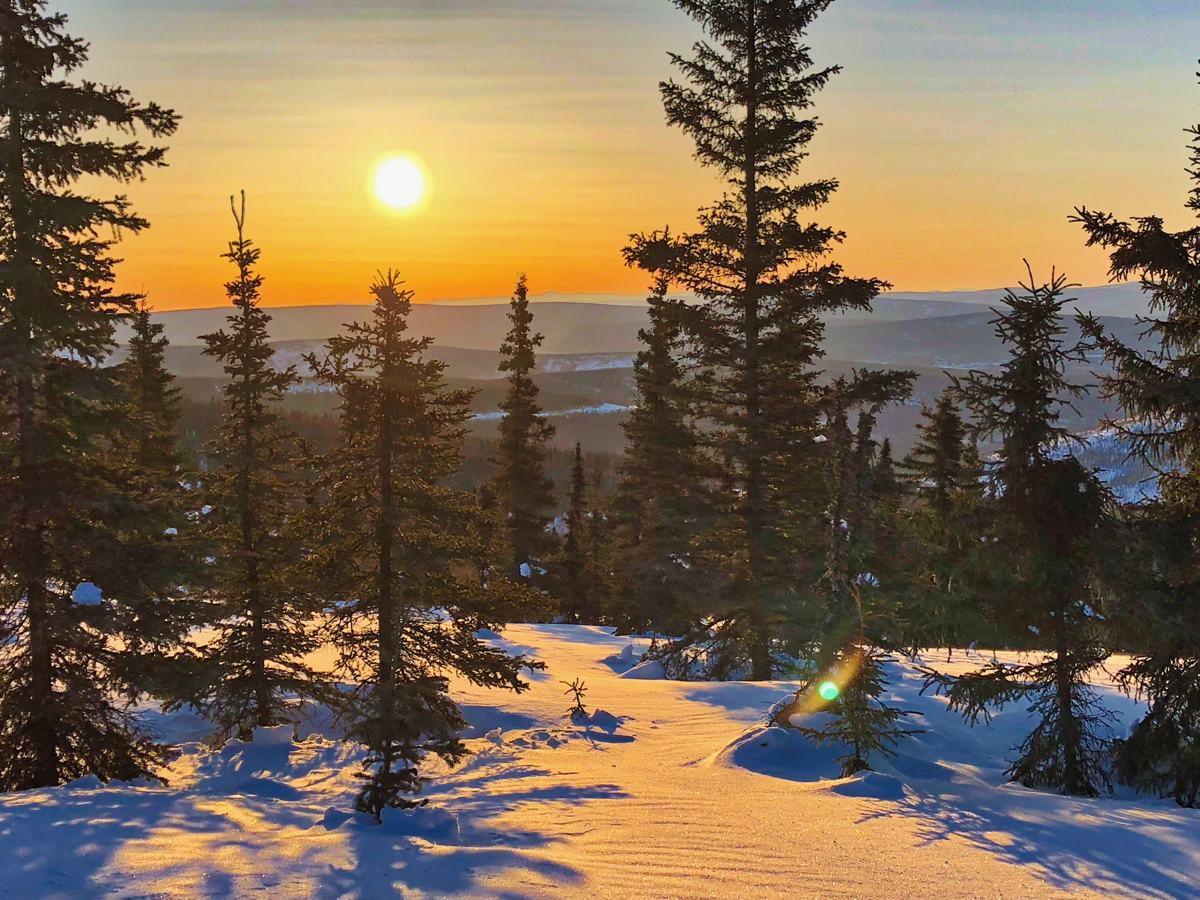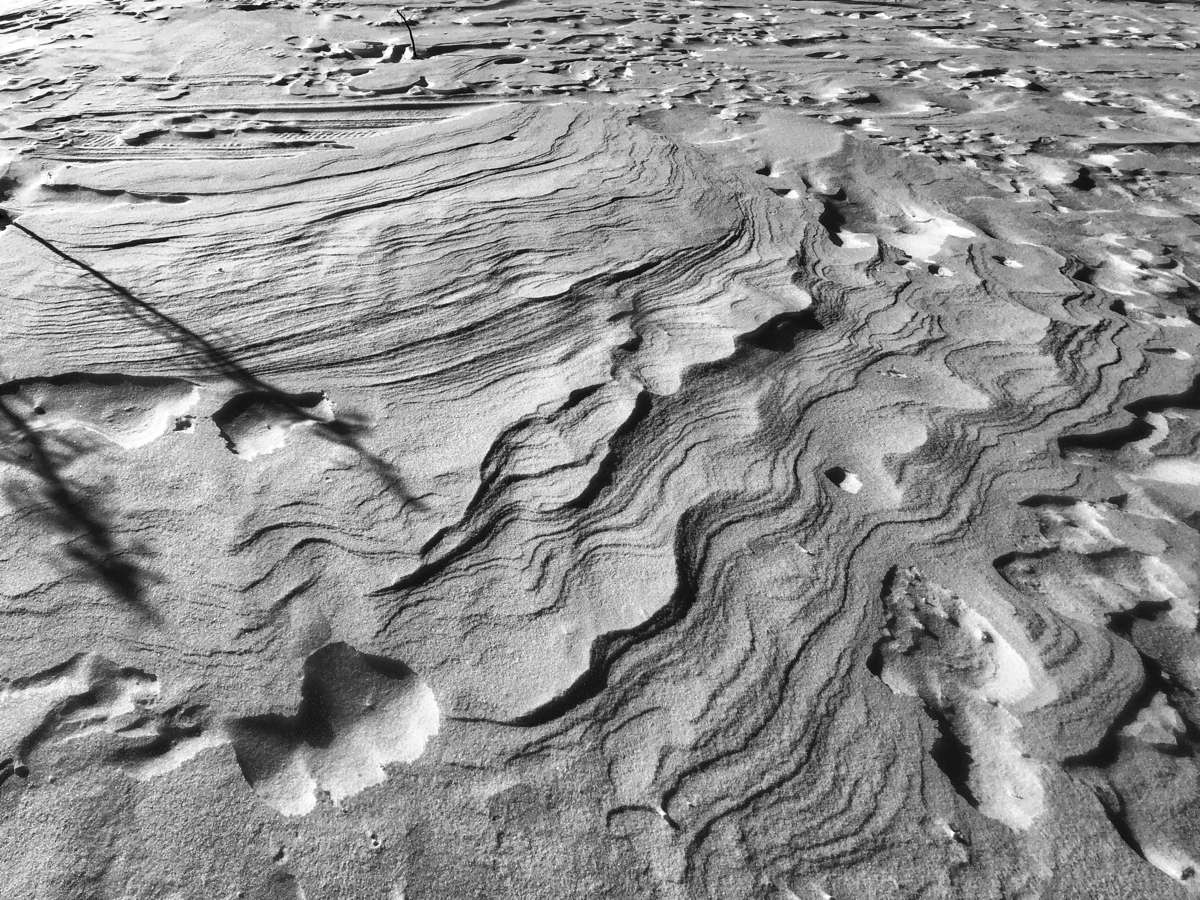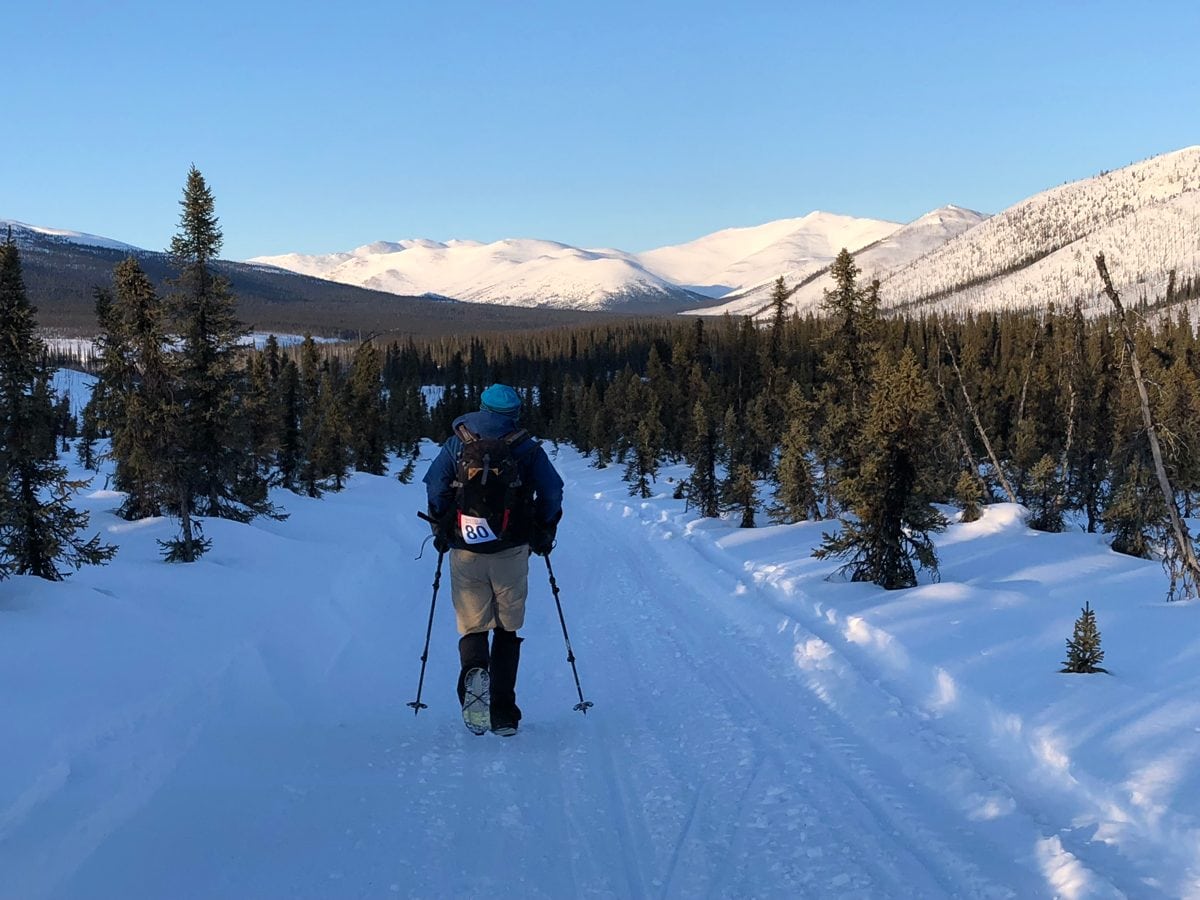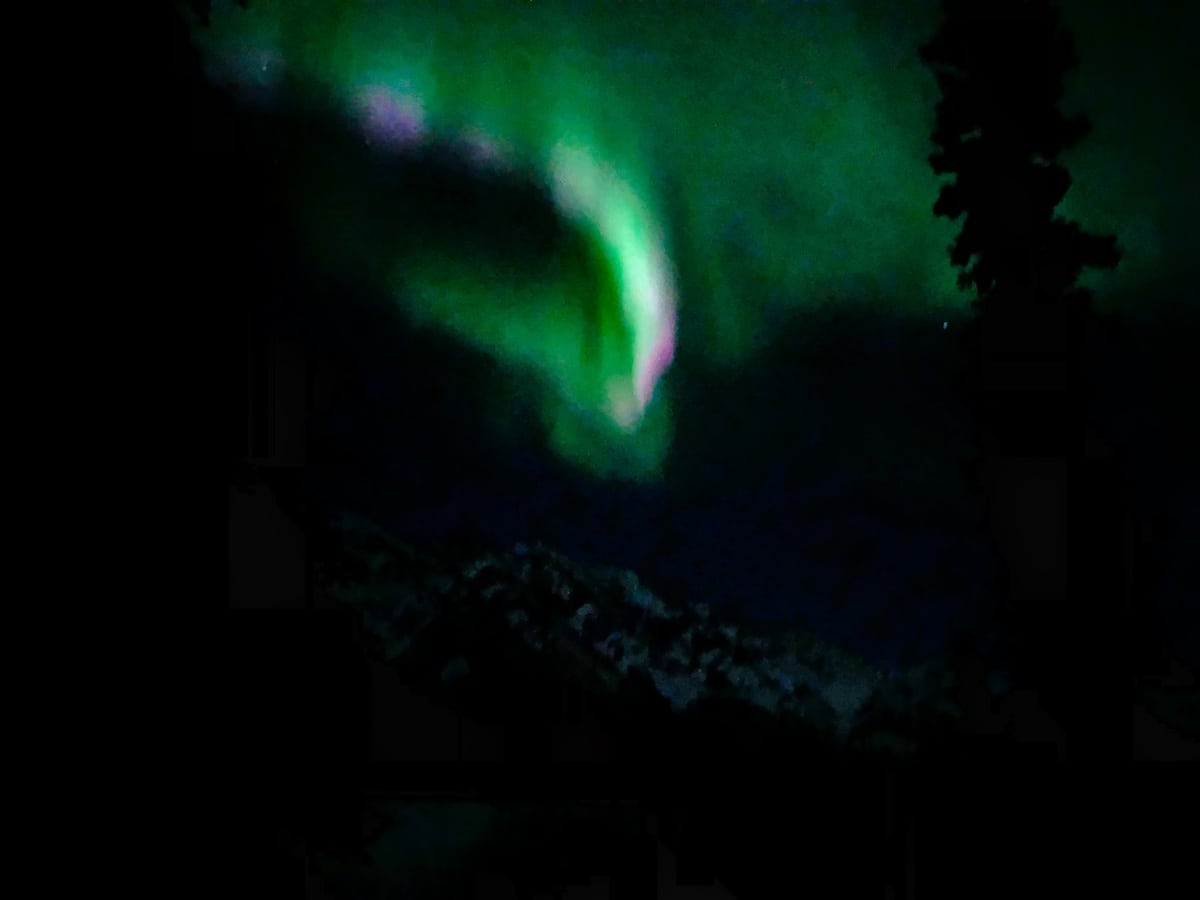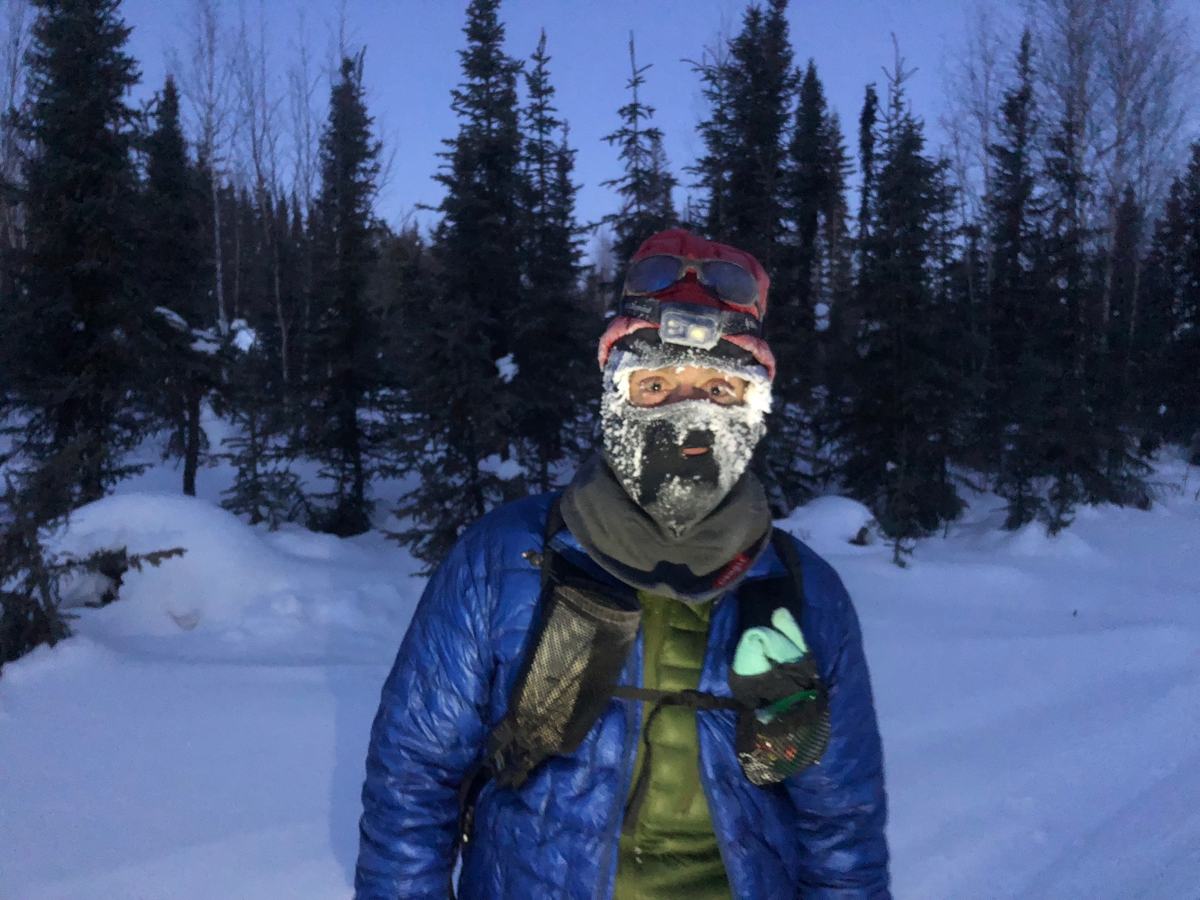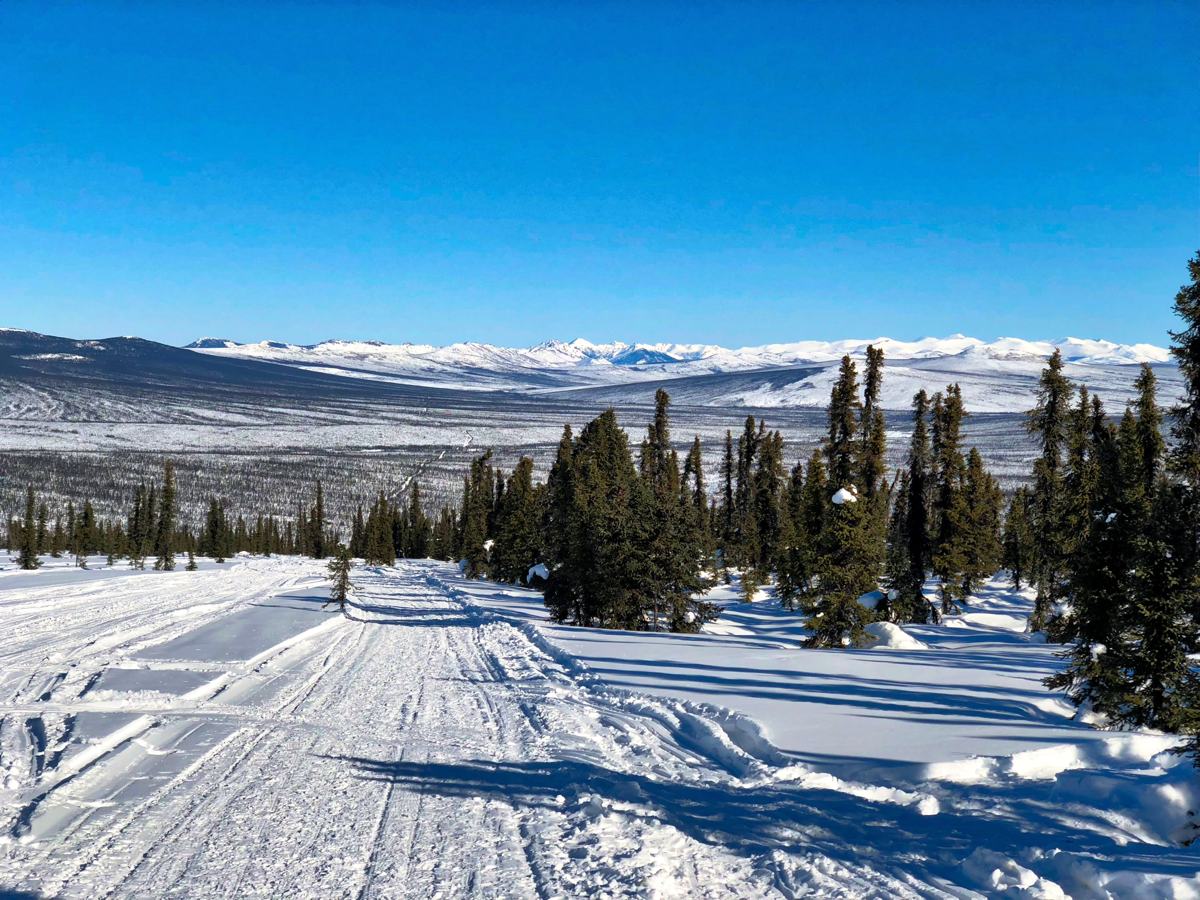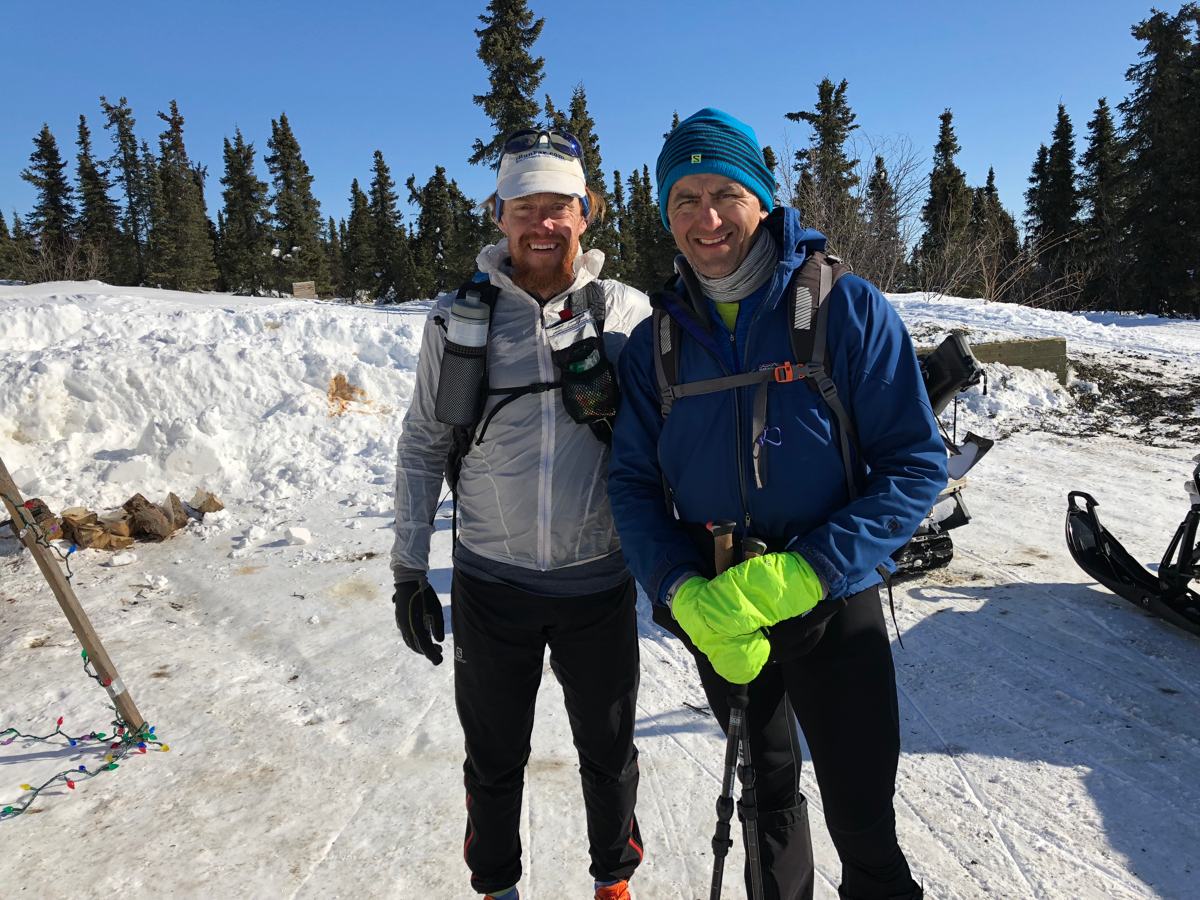I step out of the car into an early morning gale gusting across the Wickersham Dome parking lot. Wisps of couple-days-old-snow whip across the parking lot in waves. It’s not supposed to be windy today, I think to myself as I contemplate adding apparel layers to my pack… as well as why I’m about to attempt the White Mountains 100 Mile at all. Despite some pre-sunup shivering, I shouldn’t have doubted either point.
Since visiting Alaska in the autumn of 2016, I’ve had an itch to try a “winter” 100 miler thanks to chats with the likes of David Johnston and Matias Saari. As I wrote last month, part of the draw is attempting something with so much newness, with a joy of the unknown. In the case of the White Mountains 100–which is run, biked, or skied on snow over a lollipop course an hour north of Fairbanks, Alaska in late March–there is also the promise of Alaska’s intense beauty and remoteness. Despite the morning’s minor misgivings, there is absolutely no question that I’d start… or finish this one. Along the way, I’ll witness a stark mix of beauty and brutality.
The 17 miles to the first checkpoint is smooth-enough sailing save a snot-rocket-induced bloody nose a mere 10 to 15 minutes into the outing. The decent footing, even in the wake of 60-plus bikers and skiers, is reassuring after slow-as-anything snow conditions during a scouting run a few days earlier. Once things spread out, I am alone nearly the entire leg, which is nice enough as I take in all the unfamiliar scenery on good footing and with benign conditions.
Enter Leg 2. Very shortly after the tables-by-the-side-of-the-trail aid station at mile 17, things get tough. The wind we’d experienced prior to the start reappears… right in our faces. I have no idea how well I can approximate wind speed, but I guess it’s a 30+ mile-per-hour headwind. On the short stretches that I’m not headed directly into the wind, the scouring wind blows new snow into the slightly trenched trail, leaving deadening drifts in our path. There’s enough snow and wind that any prior tracks disappear within a minute. Trudging on alone, this is the only time all race I question whether I should be out here. For miles, I pass two other foot-category entrants—Laura and Chris—on the ups and they run past on the downs or during my more frequent pauses. It’s not until many miles into this leg that Chris Ragsdale and I fall in sync and start working together. A former ultracyclist, he enjoys drafting in my windbreak, while I appreciate when he’s breaking through the drifts. Thankful for the company, we pull into the first cabin at mile 39, take a leisurely 40-minute break, and head back out together.
Leaving the Cache Mountain Cabin, the ambient character immediately changes. We’re mostly out of the spindly expanses of the black-spruce bogs and into sturdier conifers. We’re also betwixt the foothills of the White Mountains with treeless tundra guarding the horizon before us. The ceaseless, unstoppable wind disappears. With the sun at our backs, the mountaintops grow ever whiter, beckoning us onward like a beacon. We answer their call, making good progress. I secretly hope to crest the Cache Divide, the race’s highest point just after the course’s midpoint, before dark. We make a gradual turn from east to north and start climbing as the world turns pastel. With our valley ever tightening, I look back often to take in the subtle palette.
We crest the divide in late twilight, Venus already glowing brightly before us. After being absent for much of the leg, the wind returns even fiercer at the 3,400-foot-altitude pass, but it’s at our backs. Wave after wave of cold smoke whips past us. We briefly pause to take it, and the view before us, in. After a long push, we’re both ready for a logistics break, but agree to first descend out of the worst of the wind.
After that, it’s a long and uneventful stretch down to the Windy Gap Cabin at mile 62. Notably, the notorious “Ice Lakes” section is snow covered this year, and we worry about neither ice nor the even-more-dangerous “wet overflow” that can occur in even extremely cold temperatures. Twice during this time, we notice a faint, static aurora near the horizon before us. I hope it’s just a hint of what’s to come. With good footing, we turn off our headlamps and run by moonlight for many miles.
Our midnight stop at Windy Gap is a bit shorter than our previous stop, but we still dry our feet, take in some calories, and Chris makes a quick upgrade to his gaiters. As we leave the cabin—BAM!—the aurora stops us in our tracks. It’s on and it’s good. A bright-green band arcs across the entire sky. Dynamic patches join the mix. It’s awesome and we take it in. As we head down the trail, we keep looking around enough that I joke that my neck’s going to get sore. We stop again and again. The cold is reasonable enough that we don’t think twice about it. The aurora dial turns up from six to eight-plus. It’s out of control. Bright pink joins fluorescent green in a tango across the sky all the while we are surrounded by a crowd of jagged limestone cliffs. It’s out of this world. Even the bright moon can’t dilute the intensity. We share our excitement and joy, neither of us concerned about our progress. That will soon change.
We go 90 minutes down the trail with our heads on swivel and nary a care in the air. Then, the little cold pockets in the stream bottoms stop being pockets. Everything gets cold. Really cold. We no longer stop to check out the aurora, which is calming down anyway. We start talking about the cold. We only stop when one of us adds another layer. We stick together and help one another as we can. Each of us has a brief very-cold-hands “moment,” but we each bounce back quickly.
To this point, we’d traveled many hours without using our headlamps, evening in thickly forested sections, happy enough to trade some speed for the tranquility of letting the heavens guide our way. F-that. Lights on. Let’s be as efficient and deliberate as possible. We stop only when we need to. We’ve been more or less solely walking, but, now, we mix in some easy jogs to stay warm. We’ve got all our clothes on. I ask Chris, who’s raced a few very cold winter fat-bike races, how cold he thinks it is. “Negative 20s.” Yeah, it’s cold. On, on, on. This night will turn out to be at least 10 degrees colder than I’d previously witnessed. I don’t mind the physical sensations… in fact, I’m downright comfortable; however, the coldness weighs heavy on my mind. It’s daunting and disconcerting. I can’t say I enjoy being in a state of “you can’t fuck up… or else” for so long. But we two travelers pass along the Beaver Creek drainage and its cold pool. During the six hours we’re out there, we see one caravan of two safety snow machines and no one else.
Needless to say, we’re relieved to arrive at the Borealis-LeFevre Cabin, the fourth and final checkpoint, at mile 81. We’re saddened to see Ty Draney there. He’d gone for the win, but ran out of the steam on the stretch to Borealis. During our extended stay here—we’re in no hurry and will let the reassuring dawn grow—Ty decides he’ll head out with us when we leave. While here, we learn there’s a thermometer outside the cabin, which sits above the likely colder drainage bottom. It reads -25F.
I’ll admit I don’t enjoy much of the final 20 or so miles. The outside of my right knee aches, my stomach has long been wonky, a few blisters have already popped, and the two huge ones under my big toenails haven’t. I’m also out of sync with our new group. Perhaps self-imposed, I feel pressure to push on even when I want to take photos… or a brief break. I don’t care about my time, but ratherI want to enjoy the journey. I want to maintain that feel. To that aim, after cresting “The Wall,” the steepest significant climb on the course, I tell Chris and Ty to carry on without me before I sit for a break and ponder the now-far-off White Mountains.
A bit down trodden, I carry on. A bit later, Chris isn’t far off in front, but I hang back for a while. Later, I join up with Chris, with Ty having more quickly headed to the finish. He and I have walked the overwhelming majority of miles since joining up the previous afternoon. We’d walked most of those miles quite quickly, but we’re slower now. Maybe three miles an hour as opposed to four. Once we hit four miles to go, I have a very good sense of exactly how far we have left based on my scouting run. On, on, on until we finish together. A few pictures later, we head into the warming trailer, start to chow down on food, I get a beer, and we relax. Ah…. I spend hours there catching up with friends new and old. I’m thankful for both. And for this adventure into the unknown.
My Race Data
Here are the Strava entries for the run: First ~60 miles. Last ~40 miles.
My 2018 White Mountains 100 Gear List
While I prefer less over more in my adventuring, the cold and remoteness of the WM100 course as well as my unfamiliarity with the course and its conditions, meant carrying a lot of stuff… even after much paring down. That said, I used the vast majority of my gear at some point, so “more” was apparently just right.
Pack and Hydration Gear
- Zpack Nero — I became one with my Nero during my week-long Bears Ears National Monument run last autumn and its combination of lightness and large volume, especially its external storage, led to my choosing it for the WM100. I’d previously added one water-bottle pocket and another large pocket (with small mesh stash area) high up on the shoulder straps. For WM100, I also looped a featherweight mesh bag to a front strap for near-instant access to and a stowage option for gloves, hats, Buffs, and other lightweight items. The extra bag worked awesomely!
- Naked Belt — I wore this running belt most of the race as a way to keep food items warm and accessible. I could have used one size larger given my extra layers… and extra winter weight. It wasn’t tight, but tended to roll up a bit.
- Nathan Double-Walled Plastic Water Bottle — I don’t think this is made any longer. It kept my current drink warm enough to, at worst, have a bit of slush at the very end. I also tried the Camelbak Podium Chill, but in a freezer test, the Nathan bottle was easier to unscrew when frozen solid, which, in the end, probably isn’t a realistic scenario.
- Forty-Below Bottle Boot w/1-Liter Bottle — Stored in my pack’s sidepocket, this managed to keep water thawed between checkpoints even in the dead of night.
Apparel – Always Worn
- Hoka One One Speed Mafate II — These caught my eye as a candidate for the WM100 months ago when I photographed them for a possible review. They stayed on my shelf until I began to seriously consider running the race just a few weeks beforehand. Their broad footprint (think floatation) and aggressive lugs worked well on all sorts of snow, as expected. I managed to snag a pair of the slightly lighter Hoka One One Evo Mafate just before the race and even put them on race morning, but went back inside and switched to what I perceived as a slightly more voluminous toebox of the Speed Mafate II.
- Smartwool Merino 150 Long Sleeve Base Layer — My go-to top for cold-weather running.
- Salomon Trail Tights — A pair of years-old, simple, lightweight running tights. I wanted the versatility of lightweight tights in case it was ever “hot” during the afternoons.
- Salomon S/Lab Hybrid Pants — A friend sent his pair to Alaska so I could borrow them for the race. (Thanks, Mike!) While I wanted these pants because they’re lightweight (both in mass and construction) and have long zippers for easy layer changing, I wore these from start to finish. They worked well enough that I never thought twice about them.
- Brooks windbriefs — These were a no-brainer choice for this event and they worked perfectly.
- Mountain Hardwear Momentum Running Gloves — Close enough to always being worn to count as such. I’ve had these light running gloves for eight years and still love ’em.
Apparel – In the Mix
- iRunFar Headsweats Cap — I wore this for most of the race, save the coldest part of the morning when I donned a balaclava.
- Half Buff — I wore this most of the race, save the coldest part of the morning and a couple warmer afternoon stretches.
- Mountain Hardwear Ghost Whisperer Hooded Jacket — My favorite windjacket ever. In fact, if you’ve got a men’s small sitting now unused in your gear stash, please let me take it off your hands. This thing is lightweight, breathable, and functional. In combination with a cap and half Buff, the hood kept my head toasty when temps were in the teens Fahrenheit with 30-mile-per-hour winds as well as below zero in calmer conditions. When it was slightly warmer, I’d just drop the hood and unzip most of the full zip.
- Mountain Hardwear Nitrous Jacket — A lightweight down jacket with a chest pocket. This has been part of my winter-adventure setup for nearly a decade. I was surprised at how much I wore it (more than half the race?… often with the Smartwool shirt and MH Ghost Whisperer), but not with how well it performed.
- Mammut Klammath Half-Zip – I wore this midweight Polartec Power Wool shirt from about midrace on. With a lengthy zip, it worked really well in a wide range of temps.
- iRunFar Black Diamond MidWeight GridTech Gloves — My second glove layer. I’m not sure if I ever wore these alone, but I wore them with the MH gloves for various stretches. Nice and warm.
- Airhole Polar Balaclava — One of three last-minute gear pickups. It performed well enough and was plenty warm. I think I’d still want a larger airway in a balaclava, even if hand cut.
- Blackrock Hat — I’d been eyeing a down beanie for a while and finally splurged. I figure I’ll have this forever. Nice and warm. One size up would have been nice, as I only wore this over the balaclava and it had a very tight fit over it.
- Blackrock Foldback Mitts — Rookie of the Run! The Blackrock Foldback Mitts are beyond warm, too light to think about, uber compressible, did I mention warm as #$%, and incredibly utilitarian. Winning formula: wear the Foldbacks over lightweight gloves, easily fold back the top of mitt to take care of manual tasks, and quickly put back top of mitt for instant rewarming. Ahhh…. Oh, and dang-quick reassurance when your hands get cold at -15 or -20 Fahrenheit and your brain tries to flick the panic switch.
- Montbell Plasma 1000 Down Jacket — If I’d not already carried this on my Bears Ears trip, the Montbell Plasma 1000 Jacket would have received serious Rookie of the Run consideration. This was the penultimate layer I put on when the serious cold settled in. That cold could/should have been disconcerting, but it was anything but with this jacket. I never even pulled the two sides of the jacket together let alone thought of zippering it. For a 4.8-ounce jacket, it’s warmer than most jackets at two to three times its weight. It’s a damn marvel.
- The North Featherlite Pants — I borrowed Meghan’s many-years-old TNF waterproof pants as a lightweight, on-over-the-shoes final bottom layer. They were the final apparel item I put on when it was -25 Fahrenheit. A tiny bit hard to get on over Hokas, but great otherwise.
- Drymax HAWKS Socks x 2 — I wore this variant of Drymax’s Hotweather for the first 40 (or 60?) miles, as well as fresh pair for the final 10.
- Smartwool winter socks — I had some heavyweight Smartwool socks in my casual sock drawer and grabbed ’em before heading north. I put them on preemptively ahead of the night. They were far more than warm enough. On the plus side, the volume took away heel rub. On the downside, the volume will also lead to me losing both big toenails.
- Drymax Hyperthin Socks — I brought these as a possible second layer or as a daytime socks if it was warm. Never worn.
Food
- Peanut M&Ms — Great calories-to-weight ratio. Edible even when very cold. (Bonus crunch!)
- Untapped Gels — A few maple-syrup gels. Easy to take any time, even when they’re very cold as well as without fluids.
- Gu Gels — A couple Gus.
- Aid Station Food — I ate lots in aid stations: candy bars, baked goods, chips, two baked potatoes (best ever!), meatball and rice soup, ramen. Given the foot racers bring up the rear in this race, I was encouraged to take food on the trail, so I brought some candy bars along. I also took Gatorade and hot chocolate out on the trail.
Stuff – Used
- Sea-to-Summit Ultra Mesh Stuff Sack (2.5L?) – Crazy light + see through + easy to open = awesome. Used a couple snack-size zip bags to subdivide items.
- Black Diamond ReVolt headlamp
- Lipstick Battery with short iPhone and micro USB cords as well as Suunto Ambit cord
- Phoozy – Insulating phone sleeve
- Paper towels – Brought for TP, used for bloody nose
- Zipties – 2 small zipties used
- Ibuprofen x 2
- Excedrin x 2
- KT Tape – Approximately 1/4 to 1/3 of a strip used in early blister care with the remainder of two segments unused
- Cut-down comb
Stuff – Not Used
- Hand Warmers x 4, Toe Warmers x 2
- Lighter and 1 Fastfire (Esbit like) cube
- SOL Emergency Bivy
- Heel lifts x 2
- Voltaren gel (20g)
What I’d Do Differently
Having made a leisurely go at the White Mountains 100 this time around, I’ll admit I have a desire to return a make a speedier go at it. Here’s some things I’d consider doing differently next time.
Me
- Go in eight to 10 pounds lighter. Would be nice to not have to carry that extra pack! ;-)
- Do some training. And some long runs, preferably runnable. This is very (slowly) runnable course.
- Rehab, especially strengthen calves. Goal: Not have to carry heel lifts and Voltaren as backup.
- A little back strengthening… like a month of planks, along with some more pack running.
- Run on snow? Yeah. The five miles on snow for the season before heading to Alaska was alright for winging it.
Gear
- Wear ½-size larger shoe.
- Only bring ankle running socks, as they’re lighter and just as useful. Only bring one spare pair. I experimented during the WM100 by drying my first pair of socks by running with them next to my body under my pack’s shoulder straps. Worked perfectly!
- Experiment with other balaclavas or equivalent.
- Possibly obtain larger down beanie. Mine is correctly sized, but it’s tough to get on over a balaclava.
- Bring light skirt? Would have been nice to have a skosh warmer bottom layer had something going wrong or even if I had to slow down.
- Go one size up on second gloves. My two pairs of gloves tended to come off together as one unit.
- Modify base layer to have zip pocket for next-to-body storage or otherwise rig an upper-torso pocket system. (Lanyard-based pocket stored under outer layer?)
- Bring Julbo Aero or equivalent. I needed brighter lenses with better venting at night. This was my intention until I lost my Aeros on Friday evening before the race!
- Pack was totally fine, but consider a smaller, lighter pack. Also, bring a bit more front storage.
- Improve hydration system: Perhaps two double-walled plastic bottles and one Forty-Below or equivalent sleeve?
- Lighter headlamp, if not going to snow. Course was so easy to follow. Barely ran with headlamp on.
- Carry less food. It’s easy enough to grab a handful of M&Ms or a candy bar at checkpoints.
- Bring less little gear, but keep lipstick battery (definitely don’t need larger one). Ditch heel lifts, Voltaren, Esbit, sunscreen pack, hair stuff. Keep lipstick battery, lighter, anti-chafe pack.
- Is there a lighter emergency bivy?
Random
- Sleep in a bed the night before 100 miler… duh.
